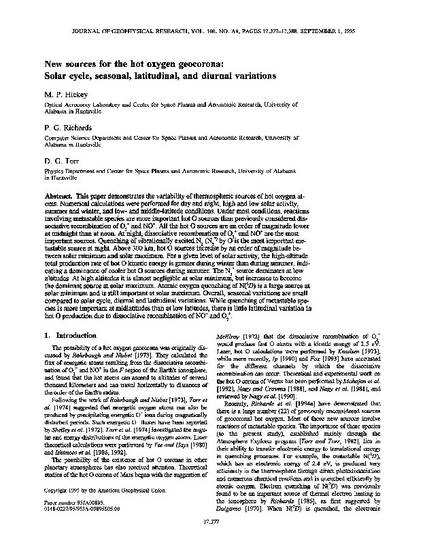
This paper demonstrates the variability of thermospheric sources of hot oxygen atoms. Numerical calculations were performed for day and night, high and low solar activity, summer and winter, and low- and middle-latitude conditions. Under most conditions, reactions involving metastable species are more important hot O sources than previously considered dissociative recombination of O2+ and NO+. All the hot O sources are an order of magnitude lower at midnight than at noon. At night, dissociative recombination of O2+and NO+ are the most important sources. Quenching of vibrationally excited N2 (N2*) by O is the most important metastable source at night. Above 300 km, hot O sources increase by an order of magnitude between solar minimum and solar maximum. For a given level of solar activity, the high-altitude total production rate of hot O kinetic energy is greater during winter than during summer, indicating a dominance of cooler hot O sources during summer. The N2* source dominates at low altitudes. At high altitudes it is almost negligible at solar minimum, but increases to become the dominant source at solar maximum. Atomic oxygen quenching of N(²D) is a large source at solar minimum and is still important at solar maximum. Overall, seasonal variations are small compared to solar cycle, diurnal and latitudinal variations. While quenching of metastable species is more important at midlatitudes than at low latitudes, there is little latitudinal variation in hot O production due to dissociative recombination of NO+ and O2+.
